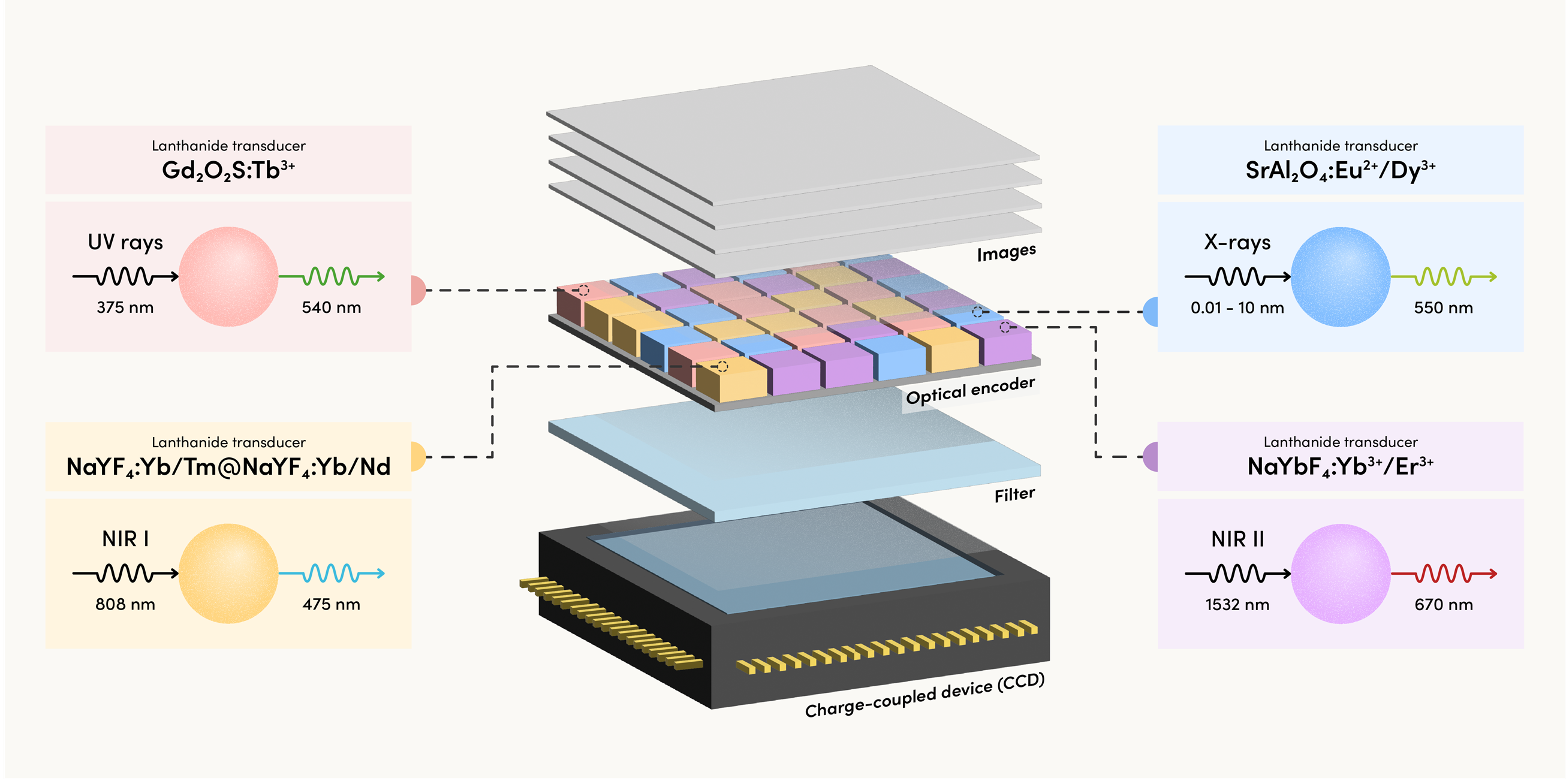Imaging technologies have developed rapidly in recent decades. Sensors are becoming increasingly compact, and the introduction of new sensor materials and architectures now enable the capture of a wider spectrum of light with enhanced sensitivity.
In line with these developments, there is a growing interest in multi-wavelength, or multispectral imaging. Here, different wavelengths of the electromagnetic spectrum are captured and combined to produce images with great details. Such images can include visible light as well as ultraviolet (UV), infrared (IR) and X-ray spectra. When combined, these images provide valuable insights into the biological, chemical, and physical properties of various objects. Multispectral imaging has numerous applications, including diagnosing diseases, characterising tissue in medical settings, detecting manufacturing defects, and mapping both the Earth’s environment and distant celestial objects.
However, current methods for obtaining multi-wavelength images are complicated. Bulky optical components, including lenses, splitters and filters are required, and images of each desired wavelength must be captured by different sensors.
A new multi-wavelength-encoded imaging sensor
To overcome the limitations of existing multi-wavelength imaging technologies, Professor Liu Xiaogang and his research team from NUS Chemistry have developed a new concept of optical engineering that focuses on optical materials. This has resulted in the development of a novel multi-wavelength-encoded imaging sensor called stochastic photoluminescence and compressed encoding (SPACE). The findings were published in
Matter in March 2024.
SPACE consists of four randomly arrayed transducers made of lanthanide-doped luminescent materials (Gd2O2S:Tb3+, NaYbF4:Yb3+/Er3+, NaYF4:Yb/Tm@NaYF4:Yb/Nd, and SrAl2O4:Eu2+/Dy3+). Each lanthanide transducer encodes and converts specific wavelengths, including UV (375 nm), NIR I (808 nm), NIR II (1,532 nm), and X-rays (0.089 nm), into visible light. A filter is incorporated under the transducers to remove the excitation light. A charge-coupled device (CCD) is then used to detect the visible light produced by the transducer array.

The four transducers are randomly distributed in the array, with each transducer occupying only 25% of the total area. This means that a given wavelength of light is only detected by 25% of the pixels in the array, indicating an undersampling for each channel. To ensure that the images captured at each wavelength do not contain ‘holes’ or missing pixels, a compressed sensing reconstruction algorithm is used to ‘fill in’ the missing information. This allows SPACE to efficiently capture images in multiple wavelengths, even if each wavelength was only partially sampled.
Although Prof Liu’s team only tested four wavelength channels, this concept could be expanded to more channels through multi-layer encoders.
SPACE presents a solution that overcomes the constraints of existing multi-wavelength imaging technologies. The combination of a randomly arrayed lanthanide transducer with the compressed sensing reconstruction algorithm not only allows multispectral images to be captured with fewer pixels, but also results in faster processing by simplifying post image processing. In addition, SPACE greatly simplifies the optical set-up and mitigates the need for bulky optical components and multiple sensors.
Importantly, SPACE technology is compatible with on-chip systems, making it suitable for diverse applications such as materials characterisation, bioimaging, remote sensing, and astronomical observations. For example, space telescopes using SPACE technology can detect multiple wavelengths with a single detector, maximising efficiency and reducing costs in space missions. In the biomedical sector, this technology can transform the visualisation of complex tissue structures and enhance both the diagnosis and treatment of diseases.
Ultimately, the development of a compact, all-in-one, multi-wavelength imaging sensor that spans the X-ray spectrum to the near-infrared region can open up new possibilities for advanced imaging applications across various fields, including wearable microscopes, smartphone-integrated hyperspectral cameras, and industrial automation.

